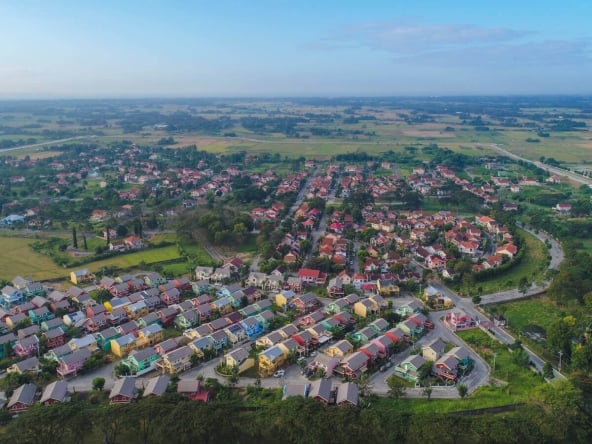
National Heroes Day in the Philippines is a day of reverence and admiration for the individuals who have shaped the nation’s history through their bravery and sacrifice. Celebrating National Heroes Day is an opportunity to honor these heroes and explore the rich historical tapestry of the Philippines.
The Philippines boasts a fascinating history marked by both triumphs and trials. To truly understand the depth and complexity of our nation’s journey, there’s no better way than to visit significant historical sites where history unfolded. Here are some of the most iconic historical sites to visit on National Heroes Day in the Philippines
Rizal Park (Luneta Park)

A visit to Rizal Park, also known as Luneta Park, is a perfect way to start celebrating National Heroes Day. This iconic park in Manila is dedicated to the national hero, Jose Rizal, whose execution on December 30, 1896, ignited the flame of the Philippine Revolution against Spanish colonial rule. The park houses the Rizal Monument, which marks the spot where Rizal was martyred.
The monument, guarded by ceremonial soldiers, stands as a symbol of freedom and national pride. Visitors can also explore the beautifully landscaped gardens, the Central Lagoon, and other monuments that pay tribute to Filipino heroes.
Fort Santiago

Located in the historic Walled City of Intramuros in Manila, Fort Santiago is another significant historical site to visit on National Heroes Day.
This fortress, built during the Spanish colonial period, was a military base and prison. It is most famously known as the place where Jose Rizal was incarcerated before his execution. Today, Fort Santiago is a well-preserved historical landmark that offers insight into the Philippines’ colonial past.
Visitors can walk through the Rizal Shrine Museum, which houses memorabilia and artifacts about Rizal’s life, and explore the fort’s dungeons, ramparts, and gardens.
Mount Samat National Shrine

For a journey into the history of World War II, the Mount Samat National Shrine in Bataan is an essential destination.
This shrine, also known as the Dambana ng Kagitingan (Shrine of Valor), commemorates the bravery of Filipino and American soldiers who fought against the Japanese forces during the Battle of Bataan.
The shrine features a towering Memorial Cross, an expansive colonnade, and a museum that exhibits wartime artifacts and historical information. The panoramic view from the top of the Memorial Cross provides a breathtaking backdrop for reflection and remembrance.
San Agustin Church

San Agustin Church, located in Intramuros, is a UNESCO World Heritage Site and a testament to the Philippines’ rich colonial history.
Built in the late 16th century, it is the oldest stone church in the country and has survived numerous earthquakes and wars. The church’s Baroque architectural style, intricate carvings, and historical significance make it a must-visit site.
Visitors can admire the beautiful frescoes, grand altar, and the tombs of various Spanish conquistadors. The adjacent San Agustin Museum houses religious artifacts, artworks, and historical exhibits that provide a deeper understanding of the church’s legacy.
Manila Cathedral

The Manila Cathedral, also known as the Minor Basilica of the Immaculate Conception, is another historical gem in Intramuros.
This grand cathedral has been rebuilt several times due to natural disasters and wartime destruction, with the current structure completed in 1958. The cathedral’s neo-Romanesque architecture, stained glass windows, and ornate interiors are awe-inspiring. It serves as the seat of the Archbishop of Manila and plays a significant role in the country’s religious and cultural history.
A visit to the Manila Cathedral offers a glimpse into the enduring faith and resilience of the Filipino people.
National Museum Complex

The National Museum Complex in Manila is an essential stop for those interested in delving deeper into the Philippines’ rich historical and cultural heritage.
The complex comprises several museums, including the National Museum of Fine Arts, the National Museum of Anthropology, and the National Museum of Natural History. Each museum offers a unique perspective on the country’s history, from pre-colonial times to the present.
For instance, the National Museum of Fine Arts houses works by renowned Filipino artists, while the National Museum of Anthropology showcases cultural artifacts from various indigenous groups.
This complex is a treasure trove of knowledge and a testament to the Philippines’ diverse heritage.
Corregidor Island

Corregidor Island, located at the entrance of Manila Bay, is a historic battleground from World War II.
Known as “The Rock,” this island fortress was the site of intense fighting between Filipino-American troops and Japanese forces. Today, the island is a memorial and museum, preserving the remnants of the war, including barracks, gun emplacements, and tunnels.
The Malinta Tunnel, with its network of underground passages, served as a bomb-proof headquarters and hospital during the war. Guided tours offer a comprehensive look at the island’s history and the heroism displayed during the conflict.
Vigan City
Vigan City in Ilocos Sur is another UNESCO World Heritage Site that offers a glimpse into the Spanish colonial period.
This well-preserved colonial town is famous for its cobblestone streets, ancestral houses, and historical landmarks. Calle Crisologo, the main street, is lined with Spanish-era houses, antique shops, and souvenir stores. Visitors can take a calesa (horse-drawn carriage) ride to explore the city’s historical sites, including the Vigan Cathedral, Syquia Mansion, and the Crisologo Museum.
Vigan’s unique blend of Filipino and Spanish architecture makes it a charming and educational destination.
Malacañang Palace
Malacañang Palace, the official residence and workplace of the President of the Philippines, is another significant historical site.
Located along the banks of the Pasig River in Manila, the palace has been the seat of power since the Spanish colonial period. The Malacañang Museum and Library, housed within the palace complex, offers guided tours that provide insight into the history of the Philippine presidency and the various presidents who have resided there.
The museum’s exhibits include historical documents, photographs, and memorabilia highlighting the country’s political history.
EDSA Shrine

The EDSA Shrine, also known as the Shrine of Mary, Queen of Peace, is a historical landmark commemorating the People Power Revolution of 1986.
This peaceful uprising led to the ousting of President Ferdinand Marcos and the restoration of democracy in the Philippines. The shrine, located at the intersection of Epifanio de los Santos Avenue (EDSA) and Ortigas Avenue in Quezon City, features a statue of the Blessed Virgin Mary and a chapel.
The EDSA Shrine symbolizes the Filipino people’s unity, courage, and commitment to democracy.
Barasoain Church

Barasoain Church, located in Malolos, Bulacan, is another significant historical site that played a crucial role in the country’s fight for independence.
Known as the “Cradle of Democracy in the East,” the church was the site of the First Philippine Congress in 1898, where the Malolos Constitution was drafted and ratified. This event marked the birth of the First Philippine Republic.
The church’s beautiful architecture and historical significance make it a must-visit destination. The adjacent Barasoain Museum exhibits the church’s history and role in the country’s quest for independence.
Paco Park
Paco Park is a tranquil oasis in the heart of Manila with historical significance. Originally a municipal cemetery during the Spanish colonial period, it later became Jose Rizal’s final resting place before his remains were transferred to Rizal Park.
The park’s circular design, with its beautiful gardens and historic chapel, provides a serene setting for reflection. Paco Park also hosts musical and cultural events, making it a vibrant and historical venue.
Bataan Death March Marker
The Bataan Death March Marker in Mariveles, Bataan, is a poignant reminder of the atrocities of World War II. This marker commemorates the start of the infamous Bataan Death March, where thousands of Filipino and American prisoners of war were forced to march over 60 miles under brutal conditions by the Japanese forces.
The marker serves as a tribute to the resilience and sacrifice of those who endured the march and a reminder of the horrors of war.
Lapu-Lapu Shrine

In Mactan Island, just off the coast of Cebu, the Lapu-Lapu Shrine honors the indigenous chieftain Lapu-Lapu, who is celebrated for his victory over Magellan in the Battle of Mactan.
This shrine pays tribute to Lapu-Lapu’s heroism and defense of Filipino sovereignty against foreign invaders. The larger-than-life statue of Lapu-Lapu stands proudly on the site where the historic battle took place, serving as a symbol of national pride and resistance.
Visitors can explore the shrine’s surroundings, which include historical markers, sculptures depicting the battle, and lush gardens that offer a serene backdrop for reflection on the island’s storied past.
Aguinaldo Shrine
The Aguinaldo Shrine in Kawit, Cavite, is the ancestral home of Emilio Aguinaldo, the first President of the Philippines.
It was here that Aguinaldo proclaimed Philippine independence from Spanish rule on June 12, 1898. The shrine, now a museum, houses artifacts and memorabilia related to Aguinaldo and the Philippine Revolution. Visitors can explore the historical rooms, the grand hall where the Declaration of Independence was read, and the sprawling grounds.
The Aguinaldo Shrine offers a unique glimpse into the life of one of the country’s most prominent national heroes and the birth of the Philippine Republic.
Intramuros

Intramuros, the historic Walled City of Manila, is a treasure trove of historical landmarks and sites.
Built during the Spanish colonial period, Intramuros served as the political and military center of the colony. Within its walls, visitors can explore cobblestone streets, centuries-old churches, and well-preserved fortifications that tell the story of the Philippines’ rich and complex history. Among the notable sites are Fort Santiago, The Manila Cathedral, and the San Agustin Church.
As you wander Intramuros, you’ll also come across Casa Manila, a museum that recreates a Spanish colonial home with antique furniture and décor. This immersive experience gives a vivid picture of 19th-century life in the Philippines.
For a breath of fresh air, Plaza de Roma is a charming square where locals and tourists alike gather to relax and soak in the surroundings. The plaza is surrounded by several important buildings, including the Ayuntamiento and the Palacio del Gobernador, which add to the historical ambiance of the area.
Intramuros is not just about the past; it also offers modern-day experiences, from quaint cafes to cultural performances celebrating Filipino heritage. Whether you’re a history buff, a culture enthusiast, or simply looking for a picturesque place to stroll, Intramuros promises a journey through time that will leave you with a deep appreciation for Manila’s enduring legacy.
Panay Liberation Marker
In Iloilo, the Panay Liberation Marker is a poignant reminder of the island’s role in World War II. The marker commemorates the liberation of Panay Island from Japanese occupation by Allied forces in 1945.
This historic site symbolizes the courage and resilience of the Filipino people during a tumultuous period in their history. Visitors can pay their respects to the heroes who fought for freedom and explore the surrounding area to better appreciate the island’s wartime history.
Magellan’s Cross
Located in Cebu City, Magellan’s Cross is a significant historical landmark that marks the arrival of Christianity in the Philippines. The cross, planted by the Portuguese explorer Ferdinand Magellan in 1521, symbolizes the country’s conversion to Catholicism.
Despite being a replica (the original cross is encased in wood to protect it from deterioration), Magellan’s Cross remains a powerful symbol of faith and cultural heritage. Visitors can witness the cross housed in a small chapel near the Basilica Minore del Santo Niño and learn about its historical significance through guided tours and informational displays.
Celebrating Philippine National Heroes Day
Visiting these historical sites on National Heroes Day is more than just a tourist activity; it’s a pilgrimage to honor the sacrifices of our forefathers. By immersing ourselves in these hallowed grounds, we connect with the past, inspiring a deeper appreciation for our nation’s heritage.
Let us remember that while these physical structures stand as testaments to our history, it is the spirit of our heroes that truly endures. As we explore these sites, let us carry with us the flame of patriotism and strive to be worthy heirs of their legacy.
Ultimately, celebrating National Heroes Day is not merely about commemorating the past but also about looking towards the future. By understanding our history, we equip ourselves with the knowledge and inspiration to build a better Philippines. Let us continue to honor our heroes by upholding their values of courage, integrity, and selfless service.

Celebrate Life’s Milestones in Camella!
Make unforgettable memories in a Camella home.
Our communities are designed to elevate your living experience.


